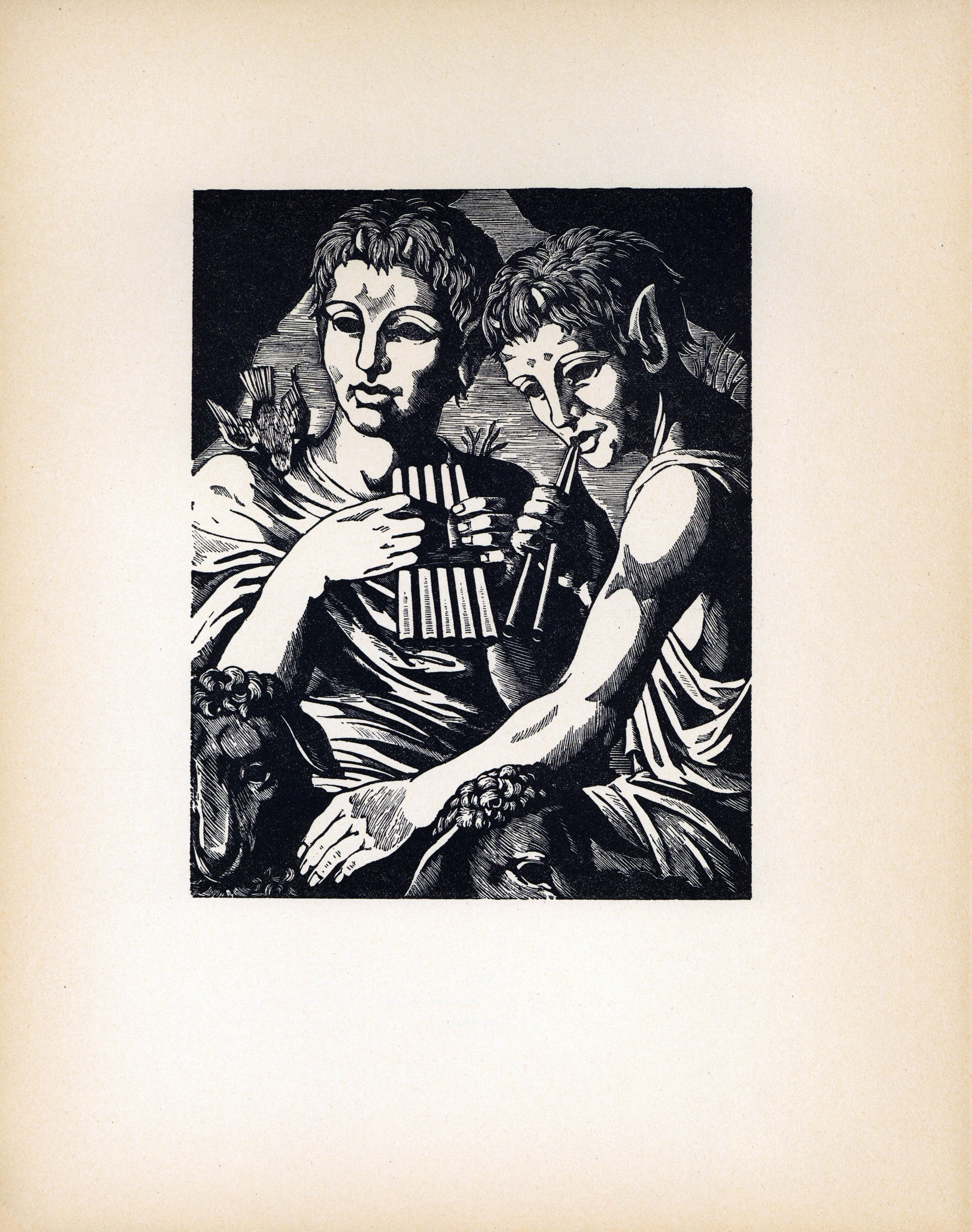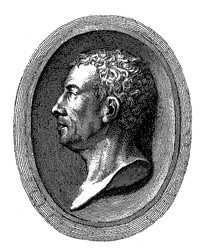Es handelt sich um Blatt XVI aus der Mappe "Griechische Visionen", die 1947/1948 im Verlag Josef Knecht in Frankfurt am Main erschien.
Dargestellt sind zwei junge männliche Gestalten, die durch ihre kleinen Hörner und spitzen Ohren als Satyrn zu identifizieren sind. Der Linke hält eine Panflöte, auf seiner rechten Schulter sitzt ein Vogel. Der andere Satyr hält eine Doppelflöte, die Aulos, und berührt mit der linken Hand eines der beiden Schafe, die vor ihnen stehen.
en









